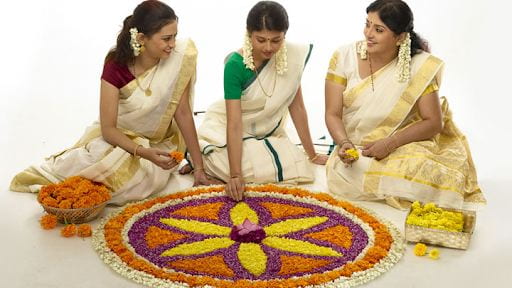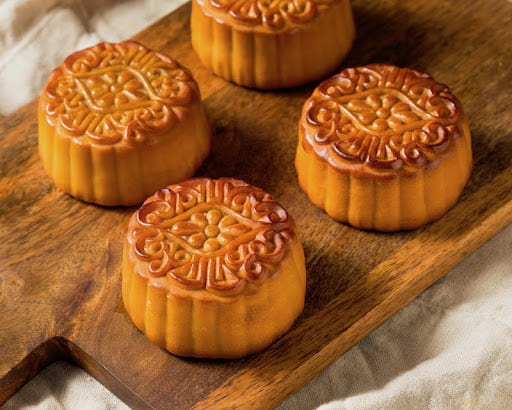Hi, international students! This blog post is brought to you by Aliff and Mindy, who are Global Leaders at ISSS. Aliff is from Malaysia, and he is an undergraduate majoring in Engineering Technology Manufacturing Systems. Mindy is from Vietnam, and she is pursuing a Master in Business Administration at SJSU.
Aliff and Mindy are hosting a Mid-Autumn Festival virtual event this September 21, 2021, which is also the actual festival day this year. If you are curious about what the festival is like or would like to take a drive back to your childhood to celebrate the festival, come join us!
- Event: Global Connections: Mid-Autumn Festival
- Date & Time: 9/21/2021, 4:00-4:50 PM (PT)
- Register for the event!
Now, on to a brief overview of how the Mid-Autumn Festival is celebrated by various cultures.
QUICK HISTORY

People started celebrating the Mid-autumn festival all the way back to 3,000 years ago. The festival originated in the Zhou Dynasty in China, became well-known in the Tang Dynasty, and was officially accepted as a national festival in the Song Dynasty.
The early form of the festival was limited to only moon worship, and through time, the festival has become more popular in other countries and people have become more creative in the ways they celebrate.
Today, people in East and South East Asian countries celebrate the Mid-autumn festival on the 15th day of the 8th lunar month. The festival falls on Tuesday, September 21 this year.
The festival has multiple layers of meaning. First, people take the festival as a chance to reunite with friends and family or harvest crops. Second, people celebrate this festival to express their thanks to the harmonious unions or the good harvest. Third, those who believe in spirituality use this time to reflect their wishes of conceptual or material satisfaction.
COUNTRY VARIATIONS
Other countries have similar celebrations to China’s mooncakes festival, but with different traditions, some countries that will be mentioned are Japan, Korea, Vietnam, and India.
Japan
Tsukimi (月見) or Otsukimi (お月見) which means moon viewing celebrates the viewing of the full moon which falls on the 15th day of the 8th lunar month. This celebration has been dated as far as back as the Heian Period (794- 1185 AD).

https://kokoro-jp.com/culture/1558/
Vietnam
Tết Trung Thu or also known as “Children’s Festival. On this day, as many Vietnamese live in rural areas and work as farmers, they celebrate the end of the harvest season and get the opportunity to celebrate the end of hard work with their loved ones. Now it is known as the Children’s Festival because they believe that the children are innocent and have the closest connection to the sacred, pure, and natural beauty of the world. The celebration of the children’s spirit was seen as a way to connect to that world still full of wonder, mystery, teachings, joy, and sadness.

https://vietnamdiscovery.com/culture-arts/mid-autumn-festival-in-vietnam/
Korea
Chuseok (추석) which means “Autumn eve” is a public holiday that is celebrated on the 15th day of the 8th month of the Chinese lunisolar calendar on the full moon. On this day, they prepare food to serve to their ancestors to thank them for providing good crops to harvest. They also visit their ancestral graves and tidy their graves by removing weeds around it. It is a day to celebrate with the family where they would meet up and cook a feast together to eat with the whole family.

https://blog.trazy.com/best-places-to-go-during-chuseok-holiday/
India
Onam is an annual harvest festival celebrated in the Indian state of Kerala, which is celebrated each year in August and September. According to legend, the festival is celebrated to commemorate King Mahabali, whose spirit is said to visit Kerala at the time of Onam.

https://www.keralatourism.org/event/thiruvonam-onam-festival/41
FOOD
Mooncakes central part of the Mid-Autumn festival experience, such that it is now commonly known as ‘Mooncake Festival’. It is linked to the legends of Chang E, the mythical Moon Goddess of Immortality where the Chinese Emperor should offer sacrifices to the Sun in spring and the Moon in autumn.

Tsukimi-dango are Japanese rice dumplings that represents the full moon. The Japanese believe that eating tsukimi-dango will bring health and happiness.

https://www.justonecookbook.com/tsukimi-japanese-mid-autumn-festival/
Songpyeon is korean rice cakes which contains stuffing made with ingredients such as sesame seeds, black beans, mung beans, cinnamon, pine nut, walnut, chestnut, jujube, and honey

https://hannaone.com/korean-cooking-blog/korean-desserts-your-family-will-love.html
Onam Sadya which in Malayalam means ‘banquet‘ is a sensational multi-course vegetarian meal that features over 24 dishes served on a banana leaf. Onam Sadhya is enjoyed without any cutlery and is usually eaten while sitting on the floor.

https://www.sharmispassions.com/onam-sadya-lunch-menu-kerala-sadya-lunch/
ACTIVITIES

https://www.echineselearning.com/blog/top-3-activities-for-the-upcoming-chinese-lantern-festival
You can celebrate the mid-autumn festival in multiple ways. A few days before the festival, you can start picking a venue and invite your family members or friends to join. Many different public places that host the Mid-autumn festival provide free admission, especially for children. On the day of, you can come there and have a nice picnic dinner with your family. You can also buy or make lanterns yourself and put them up in the sky or let them flow in the river. It is believed that the lanterns will carry your wishes and turn them into reality. On top of that, each country has its own traditional dance to celebrate the full moon. In Vietnam, for example, on the day of the festival, many houses and public places perform lion dances to spread luck and happiness.

https://activetravel.asia/mid-autumn-festival-legend—how-the-vietnamese-celebrate-it-g447.html
While some prefer celebrating the Moon festival outside in public, others choose to stay at home. Asian people value family relationships, and so this is a good chance for the family to gather together. The Moon festival can be seen as Thanksgiving in the U.S., when everyone takes a moment to reflect on their lives, appreciate what they have, and share their luck with the less unfortunate ones.
Don’t forget to join us for our Global Connections: Mid-Autumn Festival Celebration on September 21, 2021 at 4:00 pm!